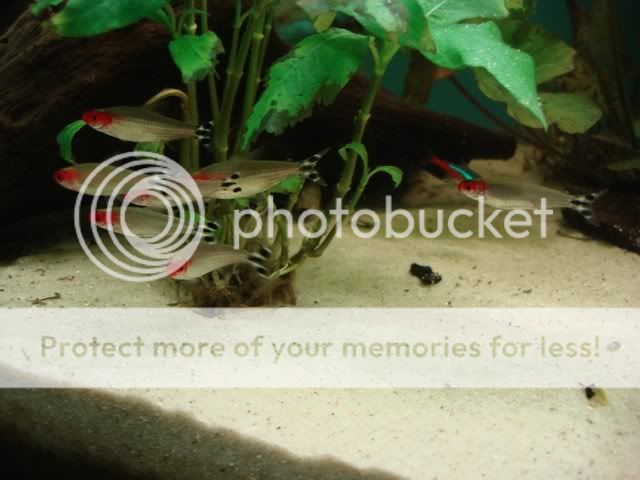I have a small tank up and running, and fully cycled  I had some problems for a while but all is fine now except one slightly ill platy, but that is being treated and hopefully improving.
I had some problems for a while but all is fine now except one slightly ill platy, but that is being treated and hopefully improving.
I now have a 2 foot tank ready to be set up (given by a friend ). I am intending to leave the small tank running for my son to look after, and set up the new tank with the fish *I* want B) As the first tank is cycled, I was hoping to use some of the filter media from that tank to start the new one.
). I am intending to leave the small tank running for my son to look after, and set up the new tank with the fish *I* want B) As the first tank is cycled, I was hoping to use some of the filter media from that tank to start the new one.
This is roughly how I think it should be done, but I would be grateful for any corrections if I'm wrong.
1. Wash gravel for new tank, put in tank and fill with water.
2. Put in the plants I want, plus ornaments etc.
3. Get heater up and running.
4. Leave it all up and running for a week to make sure everything is working fine.
5. Purchase a few fish for the new tank, something relatively hardy
6. As soon as I get home, put about half the filter media from the old tank in the filter for the new tank. Replace the missing bit in the old filter with some new sponge. Switch on the new filter, then acclimatise the new fish and introduce them to the tank as normal.
7. Do frequent tests to check all is OK, on both tanks.
8. If all is fine after a couple of weeks, add a few more fish.
9. Repeat until fully stocked
Does this sound right to you?
I now have a 2 foot tank ready to be set up (given by a friend
This is roughly how I think it should be done, but I would be grateful for any corrections if I'm wrong.
1. Wash gravel for new tank, put in tank and fill with water.
2. Put in the plants I want, plus ornaments etc.
3. Get heater up and running.
4. Leave it all up and running for a week to make sure everything is working fine.
5. Purchase a few fish for the new tank, something relatively hardy
6. As soon as I get home, put about half the filter media from the old tank in the filter for the new tank. Replace the missing bit in the old filter with some new sponge. Switch on the new filter, then acclimatise the new fish and introduce them to the tank as normal.
7. Do frequent tests to check all is OK, on both tanks.
8. If all is fine after a couple of weeks, add a few more fish.
9. Repeat until fully stocked
Does this sound right to you?



